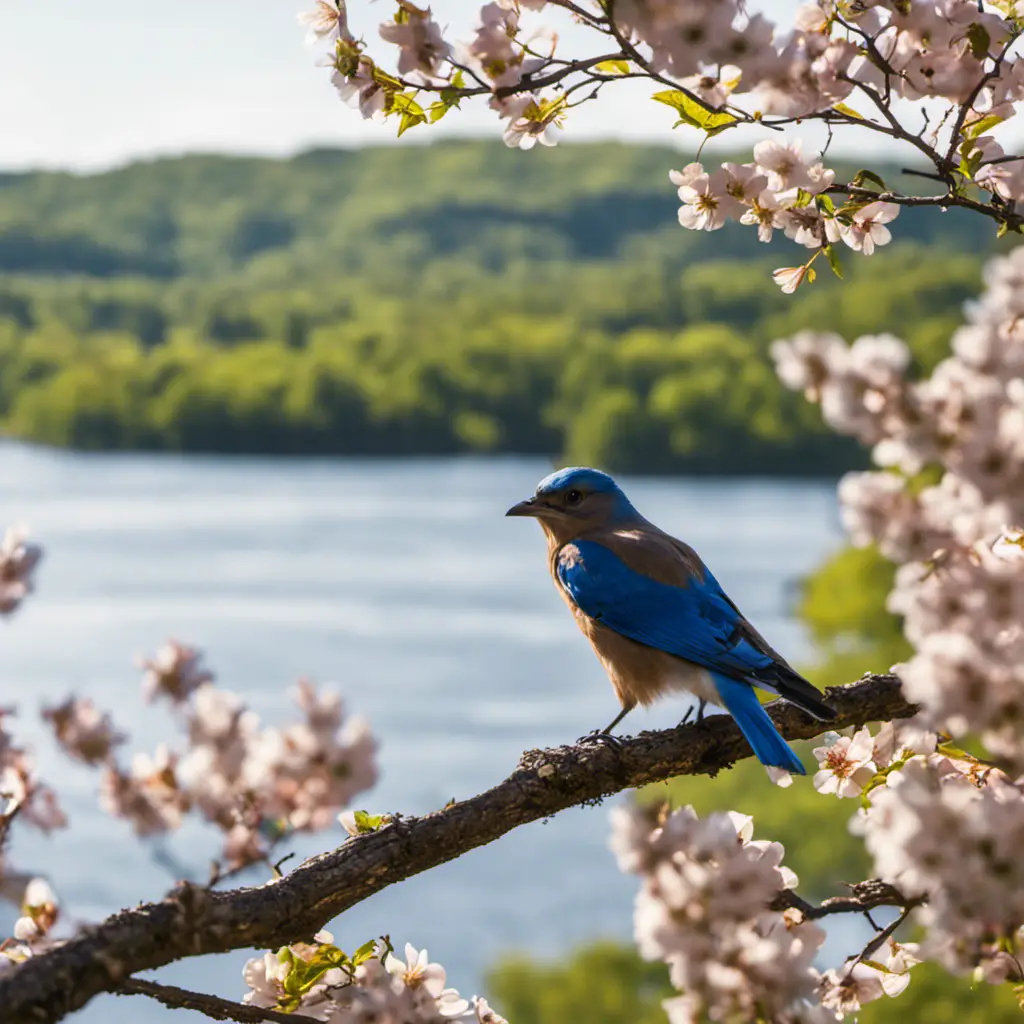Hawaii is known for its tropical climate and diverse wildlife, including a variety of bird species. Some of the most commonly seen native birds in Hawaii include the Hawaiian goose (Nene), the Hawaiian honeycreeper (ʻIʻiwi), and the red-footed booby.
We’ll go through the most common birds you’re likely to encounter in Hawaii, including their pictures and crucial information. Only reputable sources were used, and the data was double-checked with an ornithologist.
Hawaiian Short-Eared Owl
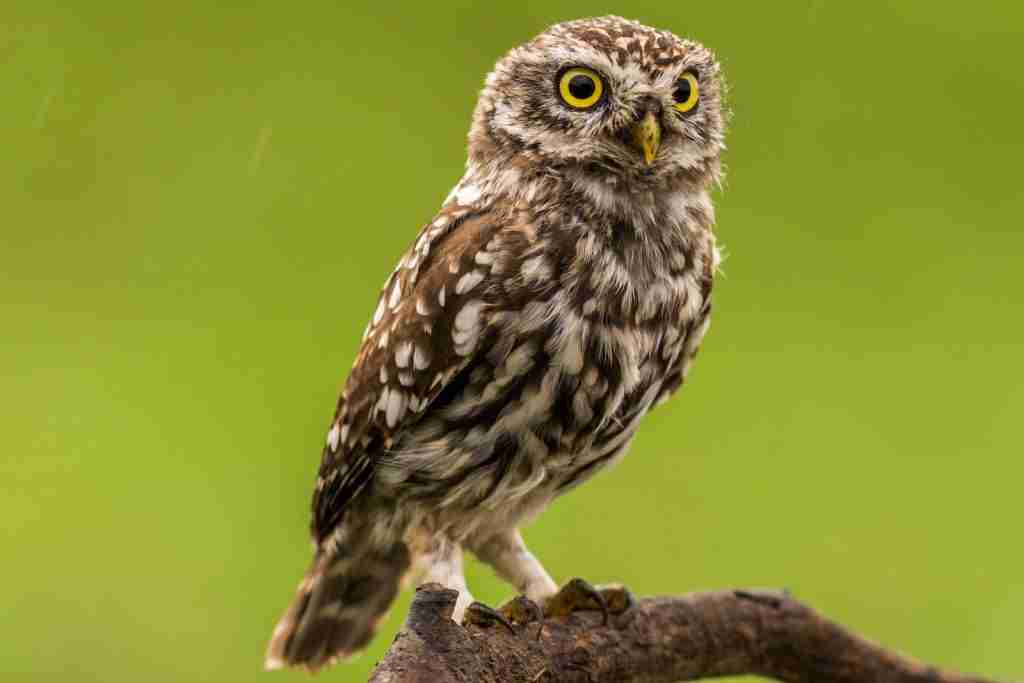
(Asio flammeus sandwichensis) is a subspecies of Short-Eared Owl found only in Hawaii. They have distinct white eyebrows, black eyes, and dark brown feathers with small white spots. Their diet consists mainly of small rodents and insects. These owls typically measure about 12 inches in length with a wingspan of 33 inches.
Hawaiian Short-Eared Owls can be found in open grasslands and shrublands, often near coastal areas. They are mainly active at night, hunting for food and nesting on the ground or low shrubs. During the day, they roost in tall vegetation or trees to hide from predators.
These owls are currently listed as a threatened species due to habitat loss and introduced predators. Conservation efforts are being made to protect their population and ensure their survival in Hawaii.

Barn Owls

Non Native barn owl (Tyto alba) can be identified by its heart-shaped facial disc and brown coloration with white underparts. In Hawaii, their diet consists mainly of rodents and small mammals. They have an average body length of 12-15 inches and wingspan of 3 feet. Barn Owls can typically be found in open fields or grasslands, but can also dwell in barns or other man-made structures.
They are nocturnal hunters and use their stealthy flight and sharp hearing to locate prey. Barn Owls mate for life and typically have a clutch size of 2-7 eggs per year. They are active year-round in Hawaii and do not migrate.
In Hawaii, Barn Owls are listed as a species of special concern due to threats from habitat loss, predators, and rodenticide poisoning. Conservation efforts focus on protecting their habitats and providing safe nesting sites for these birds.
The call of the Barn Owl is a long, eerie screech, often described as “shree-shree-shree.” They are also known for their silent flight, which helps them hunt effectively at night.
Despite their creepy appearance and call, Barn Owls play an important role in controlling rodent populations and should be appreciated for their contributions to our ecosystem.

Pueo Owl, Short-eared Owl

(Asio flammeus sandwichensis) is a subspecies of the Short-eared Owl, endemic to Hawaii. These owls have distinct black and white feathers, with a white face and dark “V” mark on their chest.
They mainly hunt small mammals like rats and mongoose, but also eat insects and small birds. Pueo can reach a length of 16-20 inches and have a wingspan of 38-48 inches. Pueo occupies a variety of habitats, including wet and dry forests, but they can typically be found in open grasslands or shrublands, near wetlands or coasts.
Native Pueo is nocturnal hunters, but may also hunt during the day. Pueo nest on the ground, using bark or twigs to build their nests. Pueo is a culturally significant bird in Hawaii and plays an important role in controlling small mammal populations.
The population of Pueo is currently stable, but threats include habitat loss from development and collisions with vehicles. There are conservation efforts in place to protect these unique owls and their habitats in Hawaii.
In addition to loss of habitat, declining numbers are also attributed to “sick owl syndrome”. Some researchers believe this may be due to pesticide use.
The Maui Nui Forest Bird is an endangered species on Oahu, and can mainly be found in upcountry Maui or along Saddle Road on Hawaii Island.

Anianiau
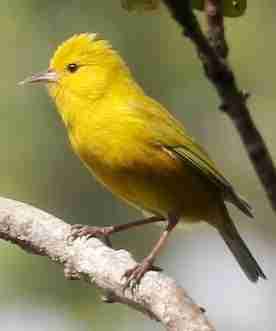
Anianiau, also known as the Hawaiian creepers, are small birds with olive-green plumage and a long slender bill. They can often be seen foraging for insects on tree trunks and branches, using their curved claws to cling to the bark. Anianiau primarily inhabits native forests, particularly in high-elevation areas such as those found in Maui and Kauai.
In terms of size, Anianiau measures approximately 5-6 inches in length and weighs around 0.5 ounces. Their diet consists mainly of insects, although they have also been known to eat fruit and nectar from native plants.
In terms of behavior, Anianiau is often seen in small flocks, rapidly moving up and down tree trunks in search of food. They are also known for their loud, high-pitched trilling calls, often heard echoing through the forest.

Laysan Finch
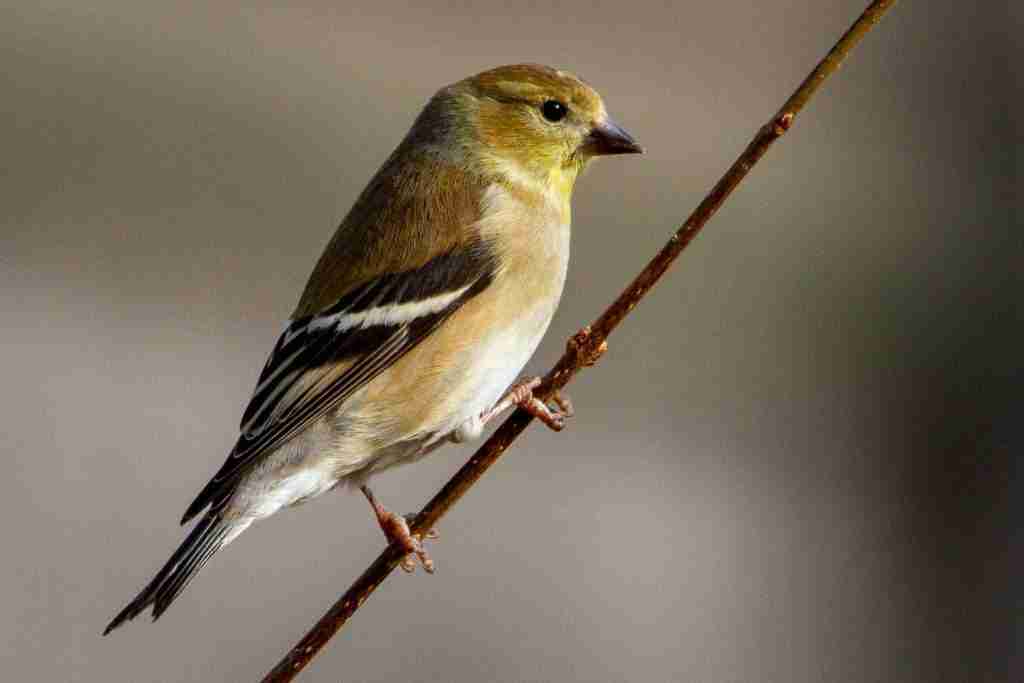
Laysan Finch, also known as Laysan Honeycreeper, is a small bird found in Hawaii. Its identifying characteristics include a yellow head and breast, dark wings, and a curved bill.
The Laysan Finch mainly feeds on insects and nectar from native plants. It is about 4 to 5 inches in size.
This bird can be found in lowland shrublands and grasslands on the Hawaiian islands of Laysan, Midway, and Kure.
In terms of behavior, Laysan Finches often form small flocks and can be seen foraging on the ground or flying between plants. They also engage in cooperative breeding, where one breeding pair is assisted by non-breeding individuals in caring for their young.

Hawaiian Ducks

Hawaiian Ducks, also known as Kolea, are easily identified by their brown plumage and distinctive white eye ring. Their diet consists mainly of aquatic plants, insects, and mollusks found in freshwater marshes and wetlands.
Hawaiian Ducks typically reach sizes of 16-18 inches in length and can be found on all main Hawaiian islands. These birds are known to form large flocks and are also capable of flying long distances, as they migrate from Alaska to Hawaii each year.
Along with their impressive flying abilities, Hawaiian Ducks are strong swimmers and often spend time diving for food. These birds are known to mate for life and can live up to 10 years in the wild.
Hawaiian Ducks serve an important role in the ecosystem as both predators and prey, and their population is currently stable.

Oahu Alauahio – Hawaiian Creeper
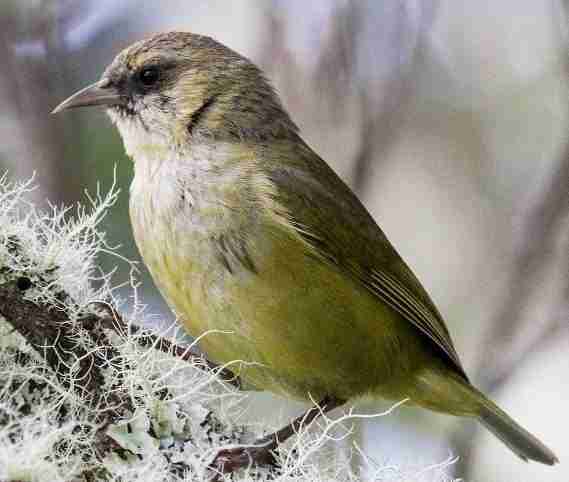
Other native birds like Oahu Alauahio, also known as the Hawaiian Creeper, is a small birds with a long curved bill and greenish-yellow plumage. Their diet consists mainly of insects and berries found in native Hawaiian forests. These birds can typically be found at elevations ranging from sea level to around 4,000 feet.
In terms of behavior, Oahu Alauahio are known for their quiet nature and tendency to move along tree trunks and branches in search of food. They often forage in small groups or pairs, but can also be seen joining mixed-species flocks.
The Oahu Alauahio is currently listed as a species of least concern by the IUCN Red List, however their numbers have been declining due to habitat destruction and introduced predators like rats. Conservation efforts aimed at protecting and restoring native forest habitats are crucial for the continued survival of this unique Hawaiian bird.

Iiwi
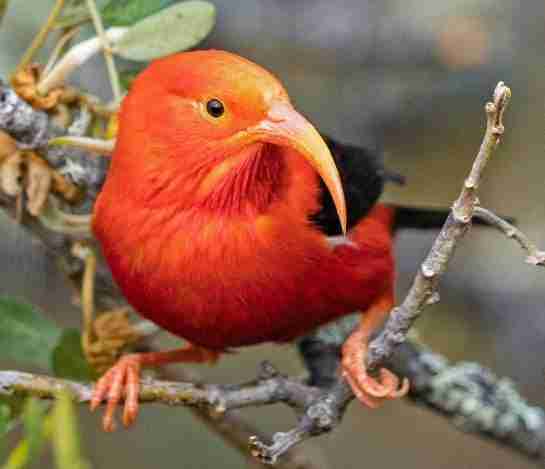
(Drepanis coccinea) is a small, brightly-colored bird found on the Hawaiian islands. Its most distinguishing feature is its deep red feathers and curved bill, which it uses to feed on nectar from native flowers.
Iiwi can reach sizes of 5-6 inches in length and typically inhabit forests at high elevations. In addition to nectar, they also eat insects and occasionally fruit. Iiwi tend to be social birds, often found in flocks or pairs.
They are known for their melodious singing abilities, which they use to attract mates. Due to habitat loss and introduced diseases, the iiwi population is currently in decline. Conservation efforts are being implemented to protect this iconic Hawaiian species.

Laysan Albatross
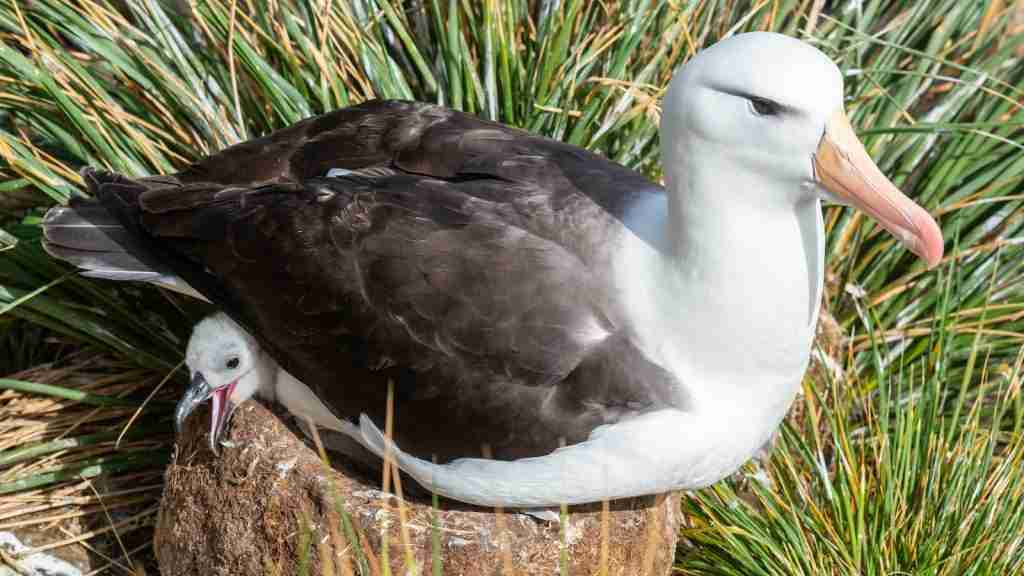
Laysan Albatrosses can be identified by their white bodies and black wings. They have a yellow bill with a dark tip. Their diet consists mainly of fish and squid, which they catch by diving into the ocean from heights up to 50 feet.
These birds have an average wingspan of about 6.5 feet and weigh around 4 pounds.
They can be found on islands and atolls in the Hawaiian archipelago, as well as other parts of the Pacific Ocean.
Laysan Albatrosses have a unique mating behavior called “sky calling,” where they fly high into the air and emit loud, wailing cries to attract potential mates. They typically mate for life and take turns incubating and caring for their chick.
Threatened by longline fishing and plastic pollution, the Laysan Albatross is listed as a vulnerable species by the IUCN Red List. Conservation efforts are being made to protect these beautiful birds.

Hawaiian Petrel

Hawaiian Petrels, also known as ‘Ua’u in Hawaiian, are easily identified by their dark gray bodies and white belly with a black band across the wings. These petrels mainly feed on small fish and squid found near the ocean surface.
They typically have a wingspan of about 20 inches and can be found nesting on high elevation cliffs throughout the Hawaiian Islands. Hawaiian Petrels are nocturnal, only coming ashore at night to avoid predators.
Unfortunately, these birds are listed as endangered due to habitat destruction and predation by non-native species introduced to the islands. Conservation efforts are currently being made to protect their breeding grounds and decrease predator populations.
By understanding the unique characteristics, diet, size, habitat, and behavior of Hawaiian Petrels, we can better conserve and protect this endangered species.

Kauai Elepaio
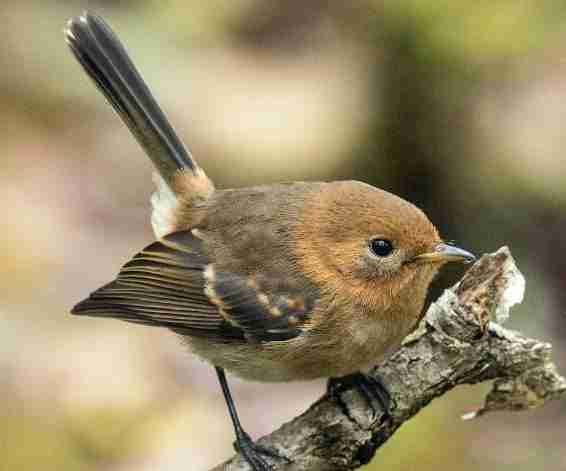
Kauai Elepaio, a small endemic bird found only on the island of Kauai, can be identified by its gray head, brown back, white throat, and black wings with white wingbars. Its diet consists mainly of insects and fruit.
Kauai Elepaio typically measure around 4-5 inches in length and can be found in forested areas at elevations up to 4,000 feet.
In addition to foraging for food, Kauai Elepaio are also known for their curious behavior of mimicking the calls of other bird species. This mimicry is thought to serve a territorial purpose, as well as attracting mates. Overall, they are active and social birds, often found in small flocks.
Conservation efforts have been successful in stabilizing the population of Kauai Elepaio, however they are still considered vulnerable due to potential threats from invasive species and habitat loss. Therefore, it is crucial to continue protecting their limited habitat on Kauai.

Omao
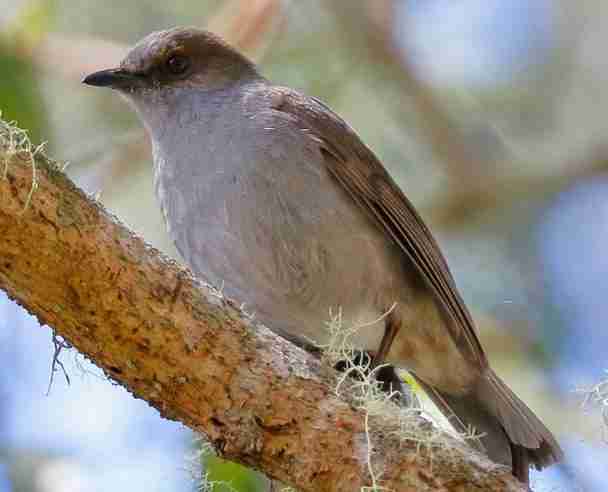
Omao, also known as the Hawaiian thrush, is identifiable by its dark gray head and brown upperparts. It has a white eyebrow and throat, with orange-tinged underparts.
In Hawaii, the Omao primarily feeds on fruits and insects.
This bird typically grows to be about 7 inches in length.
The Omao can be found in forest and shrubland habitats, at elevations ranging from sea level to about 6,000 feet.
In terms of behavior, the Omao is known for its loud and raspy song. It also engages in cooperative breeding, where non-breeding individuals will help feed and raise the young.
The Omao is currently listed as a Near Threatened species due to habitat loss and competition with introduced bird species. Conservation efforts are being made to protect this unique bird of Hawaii.

Akikiki
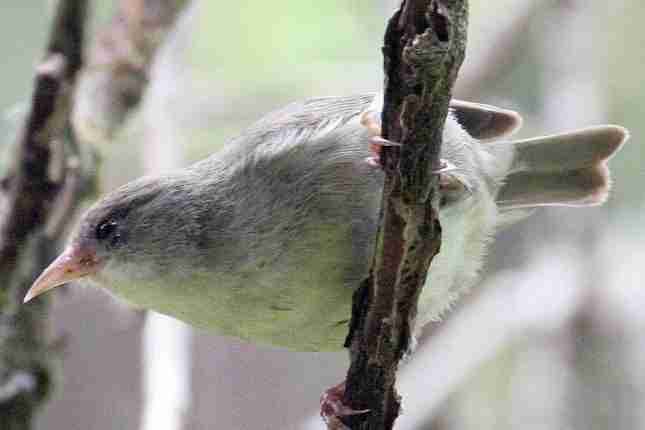
Akikiki, also known as the Kaua’i creeper, is a small brown bird with white eyebrow stripes and a curved bill. It primarily feeds on insects found on tree bark and in crevices. Akikiki can be found in dense forests on the island of Kaua’i.
These birds are often seen foraging alone or in pairs, and have a habit of bobbing their tails up and down while searching for food. Conservational efforts have been put in place to protect the Akikiki’s dwindling population.
In Hawaii, the Akikiki is currently listed as endangered due to habitat loss and mosquito-borne diseases. Continued conservation efforts are necessary to ensure the survival of this unique bird.

Palila
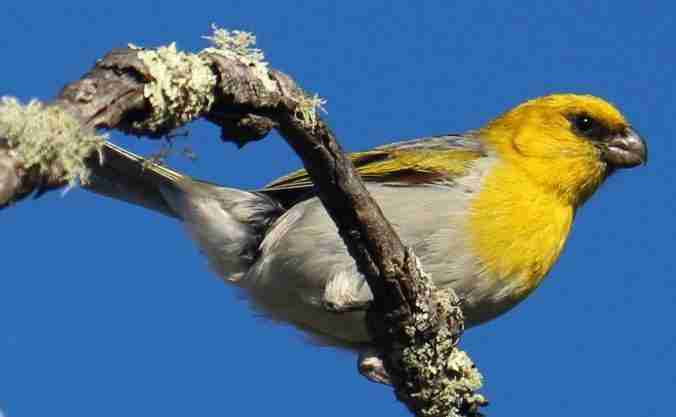
(Loxioides bailleui) are endemic to the island of Hawaii and can be recognized by their bright yellow head and breast, gray back, and curved bill. They primarily feed on the seeds and flowers of native mamane trees, but will also eat insects and nectar from other native plants.
Palila are a medium-sized bird, measuring about 7 inches in length. They inhabit high-elevation dry forests on the slopes of Mauna Kea and Mauna Loa.
Palila have a unique courtship behavior where the male will gather a mound of sticks and twigs for the female to inspect and ultimately decide if she approves as a nesting site. They are also cooperative breeders, with the breeding pair often assisted by one or two helpers in raising their young.
Due to habitat loss and threats from introduced species such as feral pigs and goats, palila are listed as endangered under the Endangered Species Act. Conservation efforts have included removing non-native ungulates and restoring native forest habitat.

Oahu Amakihi
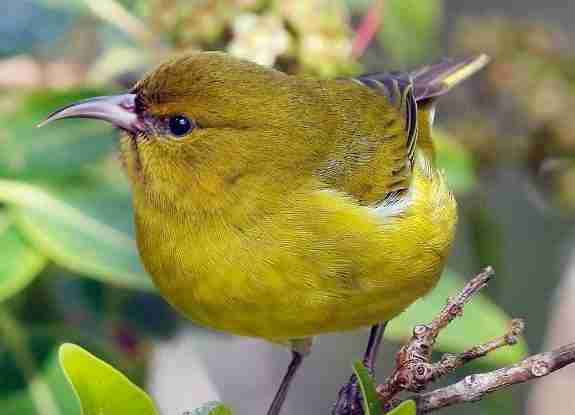
Oahu Amakihi, or Chlorodrepanis flava, is a native Hawaiian honeycreeper bird that can be identified by its yellow-green body and dark mask around the eyes. This bird primarily feeds on insects and nectar from flowers, although it has also been known to eat fruit and seeds.
On average, Oahu Amakihi reach a size of around 4 to 5 inches in length. They are typically found in forested areas and shrublands, where they build their nests high up in trees and shrubs.
In terms of behavior, Oahu Amakihi are known for being very social and active birds. They often form small flocks and can be seen flying quickly through the trees, constantly in search of food. These birds also have a unique behavior known as “wanting,” where they will rub ants onto their feathers to possibly rid themselves of parasites.
Due to habitat loss and introduction of non-native species, Oahu Amakihi populations have declined significantly. Conservation efforts are currently being made to protect and restore the habitat of these birds in Hawaii.
Hawaii Akepa
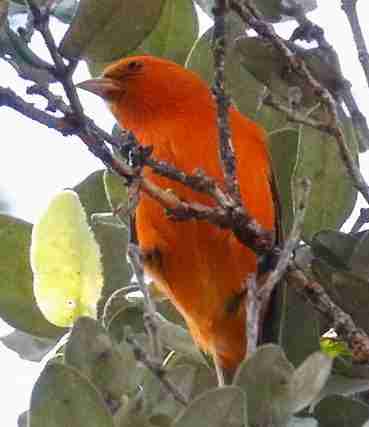
Hawaii Akepa is a small finch-like bird with a red head, yellow underparts, and gray back. Their diet consists of insects, fruits, and nectar.
They can be found in native forests on the islands of Hawaii, Maui, and Molokai. These birds are typically found in pairs or small groups and have a habit of swinging and hanging upside down while foraging for food.
They also have a distinctive high-pitched, trilling song. Hawaii Akepa are endangered due to loss of habitat and competition with introduced species. Conservation efforts are ongoing to protect this unique bird and its habitat.

Apapane

Apapane is small bird, measuring about 4.5 inches in length and weighing approximately 0.4 ounces. They have dark red feathers on their head, neck, and upper breast, with black wings and tail feathers.
Their diet consists primarily of nectar from native Hawaiian plants such as ohia lehua and koali awiwi.
In the wild, apapane can be found in a variety of habitats including rainforests, coastal shrublands, and subalpine woodlands.
During breeding season, these birds are known for their loud and melodious songs. Outside of this period, they often travel in small flocks and can be seen actively foraging for food. They are also known to be fearless and will aggressively defend their feeding territory from other birds.
Due to loss of habitat and introduction of invasive species, the apapane population in Hawaii has declined significantly. Conservation efforts have been put in place in hopes of protecting and restoring their numbers.

Hawaii Amakihi

Hawaii Amakihi is a small, green, and yellow honeycreeper with a curved bill designed for feeding on nectar, insects, and berries. They can be found in native forests, woodlands, and even urban areas. These birds tend to forage alone or in small groups, hopping along branches to search for food. Their songs are high-pitched and often mimic the songs of other bird species.
Hawaii Amakihi is endemic to the Hawaiian Islands and face threats from habitat destruction and introduced diseases such as avian malaria. Conservation efforts have focused on protecting native forests and controlling disease-carrying mosquitos to protect this unique species.
Hawaii Amakihi play an important role in pollinating native plants and maintaining a healthy ecosystem in the islands. These small but vital birds serve as a reminder of the fragility and importance of preserving Hawaii’s unique biodiversity.

Hawaii Creeper
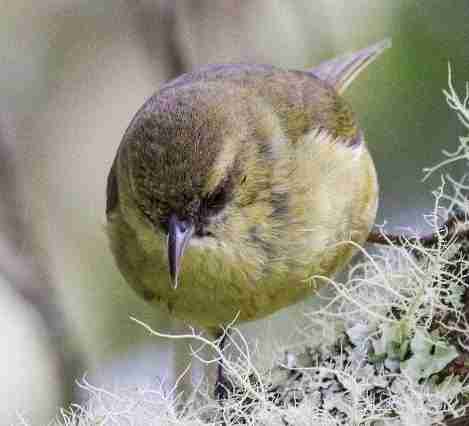
Hawaii Creeper, also known as Loxops mana, is a small bird native to Hawaii. It can be identified by its greenish-yellow upper parts and yellow underparts with dark streaks on the sides. Its diet consists mainly of insects and spiders found in trees.
Hawaii Creepers are typically about 4 inches in length and can be found in forested areas of the Hawaiian islands.
The Hawaii Creeper is known for its quiet behavior and ability to climb up tree trunks in search of food. They often form small flocks and can be seen hanging upside down while foraging.

What kind of owls live in Hawaii?
The only owl species native to Hawaii is the pueo, or Hawaiian short-eared owl. This small, brown and white owl can often be found hunting during the day in open grasslands and along the coastline.
Non-native owls, such as barn owls and barred owls, have also been introduced to the islands but are not commonly seen.
What does it mean when you see an owl in Hawaii?
Seeing an owl in Hawaii is quite rare, as the only species of owl native to the islands is the endangered Hawaiian Owl or ‘io. In Hawaiian culture, owls are often seen as symbols of knowledge and wisdom. Some believe that seeing an owl can bring about good luck or warn of upcoming change.
Where can I see owls in Hawaii?
One of the best places to see owls in Hawaii is at the Pana’ewa Rainforest Zoo and Gardens on the Big Island. This zoo has a variety of owl species, including the Northern White-Faced Owl and Great Horned Owl. Another option is to take a guided bird watching tour, as several tours have reported sightings of owls in various areas of the islands.
Lastly, owl sightings have also been reported at Kilauea Point National Wildlife Refuge on Kauai and Hakalau Forest National Wildlife Refuge on the Big Island. However, these locations can be more difficult to access and require advance planning.
How did pueo owl get to Hawaii?
It is believed that they arrived on the Hawaiian islands millions of years ago, possibly through natural means such as wind and ocean currents. They may have also been brought to the islands by Polynesian settlers as a form of animal transportation or for cultural and spiritual purposes.
Today, pueo are an important part of Hawaii’s ecosystem, helping to control rodent and insect populations. However, their population has been declining due to loss of habitat and non-native predators. Conservation efforts are being made to protect pueo and their habitats in Hawaii.

An avid ornithologist, zoologist and biologist with an unwavering passion for birds and wild animals.
Dr. Wilson’s journey in ornithology began in childhood and led him to obtain a Ph.D. in Ornithology from the prestigious Avian Research Institute. He has worked closely with renowned experts in the field and conducted extensive research and field studies globally.

